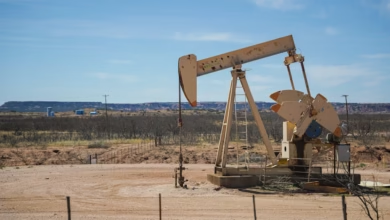Understanding Global Oil Consumption Patterns: Key Trends and Future Directions in the Oil Market

In an era where energy demands are rapidly evolving, understanding oil consumption patterns is more critical than ever. As industries across the globe adapt to changing dynamics, the trends in global oil usage reveal significant insights into the health of the oil market and its future trajectory. From the influence of OPEC on oil prices to the emerging significance of shale oil and offshore drilling, each facet plays a pivotal role in shaping the current landscape. Furthermore, the increasing environmental impact of oil has prompted a shift towards alternatives such as biofuels and natural gas, challenging traditional crude oil dependency. This article will delve into the current global oil consumption trends, analyze the implications of oil refining and transportation, and explore how the oil market is navigating the complexities of energy security and environmental responsibility. Join us as we explore the intricate web of oil geopolitics, supply chains, and technologies that define our energy future.
- 1. Current Global Oil Consumption Trends: Analyzing Industry Patterns and the Impact of OPEC
- 2. The Role of Shale Oil and Offshore Drilling in Shaping the Future of the Oil Market
- 3. Environmental Impact and Alternatives: Navigating the Shift from Crude Oil to Biofuels and Natural Gas
1. Current Global Oil Consumption Trends: Analyzing Industry Patterns and the Impact of OPEC
In recent years, global oil consumption trends have demonstrated significant shifts across various industries, influenced largely by economic, environmental, and geopolitical factors. The demand for crude oil continues to be driven by key sectors such as transportation, petrochemicals, and energy production, but the dynamics are evolving.
As of 2023, the global oil market trends indicate a steady recovery from the downturn experienced during the pandemic. The International Energy Agency (IEA) reports that global oil demand is projected to reach 104 million barrels per day by the end of the year (IEA, 2023). This resurgence is largely attributed to increased economic activity in emerging markets and the ongoing reliance on oil for transportation and industrial processes.
OPEC plays a crucial role in shaping oil supply chains and influencing oil prices. The organization, which includes major oil-exporting countries, has been proactive in managing production levels to stabilize the oil market and maintain favorable price conditions. Recent agreements among OPEC+ members to cut production in response to fluctuating demand have significantly impacted oil prices, creating a volatile environment that oil investors must navigate.
Moreover, the rise of shale oil in the United States has transformed the global oil trade landscape, challenging traditional oil-producing nations and contributing to a more competitive market. The ease of offshore drilling and advancements in oil technologies have also enabled the exploration of previously inaccessible oil reserves, leading to increased production capacities.
Environmental considerations are becoming more prominent in discussions about oil consumption. The environmental impact of oil extraction and usage is prompting a shift towards oil alternatives and biofuels, as governments and corporations prioritize energy security and sustainability. This transition is not without challenges; oil regulation and compliance are critical factors that will shape the future of oil consumption.
As industries adapt to these evolving trends, the focus on oil price hedging and strategic oil storage solutions becomes essential to mitigate risks associated with price volatility. The interplay of natural gas as a cleaner energy alternative and the push for renewable energy sources further complicates the landscape for oil consumption.
In conclusion, current global oil consumption trends reflect a complex interplay of industry patterns, OPEC's influence, and the urgent need for sustainable practices. As we move forward, the balance between maintaining energy security and addressing environmental concerns will be pivotal in shaping the future of the oil market.
References:
International Energy Agency. (2023). Global Oil Demand Outlook. Retrieved from [IEA website link]
2. The Role of Shale Oil and Offshore Drilling in Shaping the Future of the Oil Market
The role of shale oil and offshore drilling is crucial in shaping the future of the oil market, particularly as global oil consumption patterns evolve. Shale oil, extracted through hydraulic fracturing, has dramatically increased oil production in countries like the United States. This surge has impacted oil prices and altered the dynamics of the global oil trade. With the U.S. becoming one of the largest producers of crude oil, the influence of OPEC has been challenged, leading to more competitive oil market trends.
Offshore drilling also plays a significant role in expanding oil reserves. As onshore fields mature and decline, companies are investing heavily in offshore oil exploration to tap into new resources. This exploration is essential for maintaining energy security, especially for countries that rely heavily on oil imports. Advancements in oil technologies have made offshore drilling more efficient and less environmentally invasive, addressing concerns over the environmental impact of oil extraction.
Moreover, both shale oil and offshore drilling have implications for oil transportation and storage. Increased production necessitates robust oil supply chains and infrastructure, including oil pipelines and storage facilities, to manage the flow of crude oil to refineries. The downstream oil sector must adapt to these changes, adjusting refining capacities and investing in oil field services to handle the diverse types of crude oil produced.
As the market faces pressures from the push towards oil alternatives, including biofuels and natural gas, the future of shale oil and offshore drilling will also depend on regulatory compliance and geopolitical considerations. Oil geopolitics will continue to influence decisions on exploration and production, as nations seek to balance economic growth with environmental commitments.
For oil investing, understanding these trends is vital. Investors must consider the fluctuating oil prices and the potential for oil price hedging as new technologies and regulatory landscapes emerge. Ultimately, the interplay between shale oil, offshore drilling, and the evolving oil market will significantly impact global oil consumption and the future landscape of energy.
3. Environmental Impact and Alternatives: Navigating the Shift from Crude Oil to Biofuels and Natural Gas
The environmental impact of oil consumption is a pressing concern as the world grapples with the consequences of crude oil usage across various industries. Traditional oil refining processes and the reliance on fossil fuels have contributed significantly to greenhouse gas emissions, prompting a shift towards more sustainable energy solutions. As oil prices fluctuate due to market dynamics influenced by OPEC decisions and global oil trade, there is a growing urgency to explore oil alternatives that mitigate environmental harm.
Biofuels have emerged as a viable alternative to crude oil, offering a renewable source of energy derived from organic materials. These fuels can significantly reduce carbon emissions compared to traditional petroleum products. The production of biofuels not only provides a sustainable energy option but also enhances energy security by diversifying the energy supply. Moreover, advancements in oil technologies and innovations in oil field services are making it easier to integrate biofuels into existing oil supply chains, further supporting the transition away from fossil fuels.
Natural gas is another promising alternative that presents a lower environmental impact compared to oil. With its abundant reserves and cleaner-burning properties, natural gas can serve as a transitional fuel while the world moves toward more sustainable energy sources. The increasing investment in natural gas infrastructure, including oil pipelines and storage facilities, highlights the shift in energy strategies aimed at reducing reliance on crude oil.
As the oil market trends evolve, companies and investors must consider the implications of oil regulation and compliance in the context of environmental sustainability. This includes understanding the geopolitical aspects of oil consumption, such as the role of shale oil and oil sands in the global energy landscape. By prioritizing energy-efficient practices and investing in oil price hedging strategies, stakeholders can navigate the complexities of the oil market while minimizing the environmental impact of oil consumption. The ongoing transition from crude oil to biofuels and natural gas represents a critical step towards a more sustainable and environmentally responsible energy future.
In conclusion, understanding the evolving patterns of oil consumption is crucial for navigating the complex landscape of the global oil market. The analysis of current global oil consumption trends reveals how industries adapt to fluctuations in oil prices and the strategic maneuvers of OPEC that influence the oil trade. The rise of shale oil and offshore drilling technologies is reshaping the future of oil supply chains, ensuring energy security while presenting new opportunities for oil investing.
However, the environmental impact of oil cannot be overlooked. As the world increasingly seeks oil alternatives, such as biofuels and natural gas, industries must remain compliant with oil regulations and explore innovative oil technologies to minimize their carbon footprint. The transition towards cleaner energy sources is not just a trend; it is a necessity for sustainable development.
Ultimately, stakeholders in the oil industry, from oil field services to petrochemical manufacturers, must adapt to these market trends while considering the geopolitical implications of oil reserves and transportation. By striking a balance between traditional oil refining practices and the pursuit of greener alternatives, the industry can pave the way for a resilient energy future that meets both economic and environmental goals. As we look ahead, continuous monitoring of oil market trends will be essential for informed decision-making in this dynamic sector.





